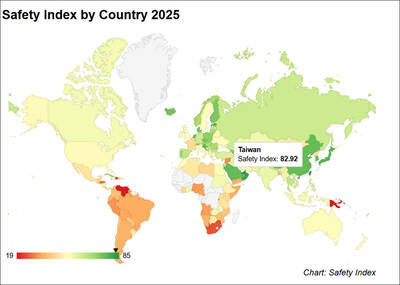Chinese movements around Taiwan were “abnormal,” Minister of National Defense Chiu Kuo-cheng (邱國正) said yesterday, flagging recent amphibious exercises in addition to drills Taipei has observed in China’s Fujian Province.
Taiwan has reported a rise in Chinese military activity over the past week as dozens of fighters, drones, bombers and other aircraft, as well as warships, have operated around the nation.
“Our initial analysis is that they are doing joint drills in September, including land, sea, air and amphibious,” Chiu told reporters at the legislature in Taipei.

Photo: Liu Hsin-de, Taipei Times
The “recent enemy situation is quite abnormal,” he said.
The comments followed a statement from the ministry on Thursday that it was keeping watch on Chinese activities near Dacheng Bay in Fujian Province.
Taiwan security sources said that China performs landing drills in the bay area.
China has not said anything about the drills around Taiwan, and its defense ministry did not respond to two requests for comment.
Chiu said releasing the information about Dacheng Bay was in line with his ministry’s principle of telling people what was happening.
China carried out landing drills in Dacheng Bay in September last year and the year before that, said Chieh Chung (揭仲), a military researcher at the National Policy Foundation think tank.
Those exercises featured civilian ships with equipment practicing “dockless unloading,” to simulate a situation in which they might need to land after port facilities are knocked out of action or destroyed, Chieh said.
However, China would be hard-pressed to carry out a frontal, amphibious invasion of Taiwan, given geographic difficulties, a senior US defense official told the US Congress on Tuesday.
Last week, China also dispatched more than 100 naval ships on regional exercises, in areas such as waters in the South China Sea and off Taiwan’s northeast coast, a regional security official said on condition of anonymity.
China traditionally performs large-scale exercises from July to September, the Ministry of National Defense has said.
Yesterday, the ministry said that it had detected 24 Chinese People’s Liberation Army (PLA) Air Force planes entering Taiwan’s air defense zone over the previous 24 hours, with at least 17 crossing the median line of the Taiwan Strait, as shown on a map it published.
Another security source told reporters, also on condition of anonymity, that China was likely seeking to wear out Taiwan’s military with constant missions so close to Taiwan, especially with longer flights along the median line than before.
“China is seeking to normalize these activities and push Taiwan into a corner,” the source said, adding that it risk a miscalculation if Chinese ships or aircraft got too close and Taiwan opened fire.
Taiwan has frequently said that it would remain calm and not escalate the situation, but that it would not allow “repeated provocations” from China, the source said.

AIR SUPPORT: The Ministry of National Defense thanked the US for the delivery, adding that it was an indicator of the White House’s commitment to the Taiwan Relations Act Deputy Minister of National Defense Po Horng-huei (柏鴻輝) and Representative to the US Alexander Yui on Friday attended a delivery ceremony for the first of Taiwan’s long-awaited 66 F-16C/D Block 70 jets at a Lockheed Martin Corp factory in Greenville, South Carolina. “We are so proud to be the global home of the F-16 and to support Taiwan’s air defense capabilities,” US Representative William Timmons wrote on X, alongside a photograph of Taiwanese and US officials at the event. The F-16C/D Block 70 jets Taiwan ordered have the same capabilities as aircraft that had been upgraded to F-16Vs. The batch of Lockheed Martin

GRIDLOCK: The National Fire Agency’s Special Search and Rescue team is on standby to travel to the countries to help out with the rescue effort A powerful earthquake rocked Myanmar and neighboring Thailand yesterday, killing at least three people in Bangkok and burying dozens when a high-rise building under construction collapsed. Footage shared on social media from Myanmar’s second-largest city showed widespread destruction, raising fears that many were trapped under the rubble or killed. The magnitude 7.7 earthquake, with an epicenter near Mandalay in Myanmar, struck at midday and was followed by a strong magnitude 6.4 aftershock. The extent of death, injury and destruction — especially in Myanmar, which is embroiled in a civil war and where information is tightly controlled at the best of times —

Taiwan was ranked the fourth-safest country in the world with a score of 82.9, trailing only Andorra, the United Arab Emirates and Qatar in Numbeo’s Safety Index by Country report. Taiwan’s score improved by 0.1 points compared with last year’s mid-year report, which had Taiwan fourth with a score of 82.8. However, both scores were lower than in last year’s first review, when Taiwan scored 83.3, and are a long way from when Taiwan was named the second-safest country in the world in 2021, scoring 84.8. Taiwan ranked higher than Singapore in ninth with a score of 77.4 and Japan in 10th with

SECURITY RISK: If there is a conflict between China and Taiwan, ‘there would likely be significant consequences to global economic and security interests,’ it said China remains the top military and cyber threat to the US and continues to make progress on capabilities to seize Taiwan, a report by US intelligence agencies said on Tuesday. The report provides an overview of the “collective insights” of top US intelligence agencies about the security threats to the US posed by foreign nations and criminal organizations. In its Annual Threat Assessment, the agencies divided threats facing the US into two broad categories, “nonstate transnational criminals and terrorists” and “major state actors,” with China, Russia, Iran and North Korea named. Of those countries, “China presents the most comprehensive and robust military threat